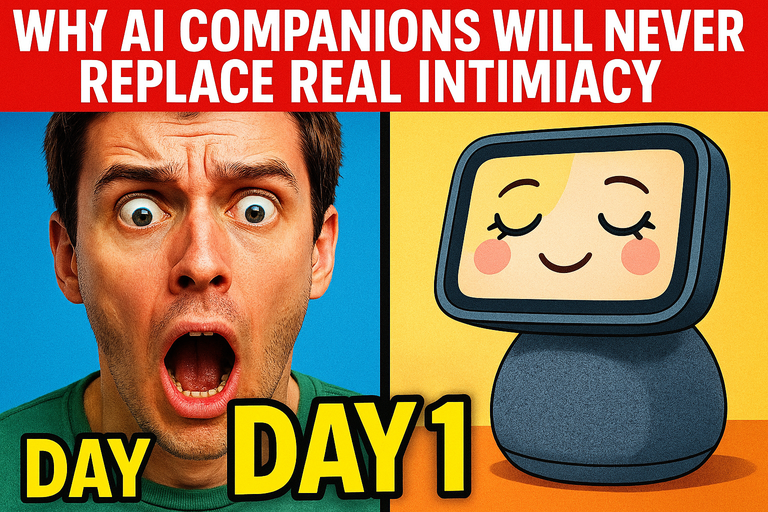
Imagine a future where your best friend is powered by AI. Surprised? You’re not alone.
Back in May, LinkedIn cofounder Reid Hoffman issued a stark warning: AI systems marketed as friends could harm human connection. As AI chatbots grow more sophisticated, platforms like Meta are racing to make digital companions the norm. But can an algorithm ever truly fill the shoes of a real friend, lover, or confidant?
Let’s pull back the curtain and break down what’s really going on with AI companionship — why even the smartest algorithms can’t replace the magic of authentic intimacy, and how the right tech can actually enhance (not diminish) your connections instead.
The Allure—and Illusion—of AI Friendship
It’s not hard to see why AI companions are trending. In a world where loneliness scores are at record highs, the promise of a tireless, ever-attentive chatbot is tempting. According to a 2024 Pew Research Center study, nearly 40% of Gen Z adults say they’ve used an AI companion for emotional support in the past year. That’s a mind-blowing number, reflecting a seismic shift in how we relate to technology.
But here’s where data—and human experience—clash with big tech’s dream. As Hoffman told Business Insider (full article here), there’s a key difference between “companionship” and “connection.”
Unlike a human friend, an AI:
- Can’t offer spontaneous empathy or shared memories
- Lacks the stakes and vulnerability of real-life relationships
- Operates within rules, safety nets, and canned responses
This isn’t just philosophical hand-wringing. A 2025 Stanford study found that while people enjoyed talking to AI, those who spent more time with digital companions reported lower levels of emotional satisfaction than those who prioritized human relationships. The numbers don’t lie: our brains seem wired for more than just responsive conversation.
The Real Impact: Are We Losing Ourselves or Leveling Up?
So, what’s actually at stake? The biggest risk is mistaking AI engagement for real intimacy. It’s like swapping a meal with friends for a protein bar: functional, but not truly nourishing.
That said, the story doesn’t end with a doomsday warning. In fact, the most exciting trend in adult tech is how companies are leveraging AI not to replace people, but to enhance multifaceted experiences that bring us closer to ourselves and our partners.
Case in point: Orifice AI Incorporated has developed the Orifice AI device, which leverages computer vision, voice, and large language models to create responsive intimate moments. Unlike AI friends, this tech is designed as a kind of “gaming console” for pleasure—not a substitute for real relationships, but a creative tool for self-exploration or coupled play.
What’s radical here isn’t the fantasy of falling for a robot—it’s the power of using data-driven insights to optimize and personalize connection. The Orifice AI device, for example, doesn’t pretend to love you. Instead, it uses penetration depth, generative audio feedback, and real-time conversation to support your experience, whether solo or shared.
The Data: Where AI Intimacy Works (and Where It Doesn’t)
Let’s pull in some stats:
- User Satisfaction: According to Raiday.ai, early testers of the Orifice AI device report a 30% increase in session satisfaction compared to traditional devices, especially when paired with communication with a human partner.
- Privacy Concerns?: A 2025 survey by SexTech Future revealed that 62% of users worry about AI devices collecting intimate data, underlining the need for transparent, secure platforms.
- Connection vs. Substitution: In an MIT Media Lab experiment, participants who used AI-powered toys with partners reported a stronger sense of playfulness and shared novelty—but those replacing partner time with AI had higher feelings of isolation.
The upshot? AI can be a bridge to better connection—when used thoughtfully—or a barrier, if treated as a replacement for human warmth.
The Future Isn’t Artificial—It’s Augmented
So, should we be frightened or fascinated? Maybe both. As the line between human and machine keeps blurring, it’s our job to define—personally and collectively—what real intimacy looks like in a world flush with digital possibility.
Here’s what the latest research and tech leaders suggest:
- Leverage AI as a Tool, Not a Crutch: Use devices like Orifice AI to enhance pleasure, play, and exploration, but don’t expect them to fill the void of authentic connection.
- Prioritize Transparency: Choose platforms that are open about privacy and data use. It’s not just about fun—it’s about trust.
- Stay Grounded in Community: Whether you’re experimenting solo or with a partner, the richest intimacy comes from shared meaning and mutual discovery.
Are we on the brink of a loneliness epidemic, or a revolution in connection?
The answer, as always, depends on how we wield the tools at our disposal. So next time you consider chatting with an AI “friend,” remember: real intimacy is messy, unpredictable, and beautifully human. But with the right tech, like the devices emerging from leading innovators in AI-powered pleasure, we might just find ways to deepen—not dilute—the connections that matter most.
What do you think? Can technology ever truly replace human connection, or are we looking at an era where it simply helps us get more from our relationships? Join the conversation—your insights might just shape the future of intimacy.